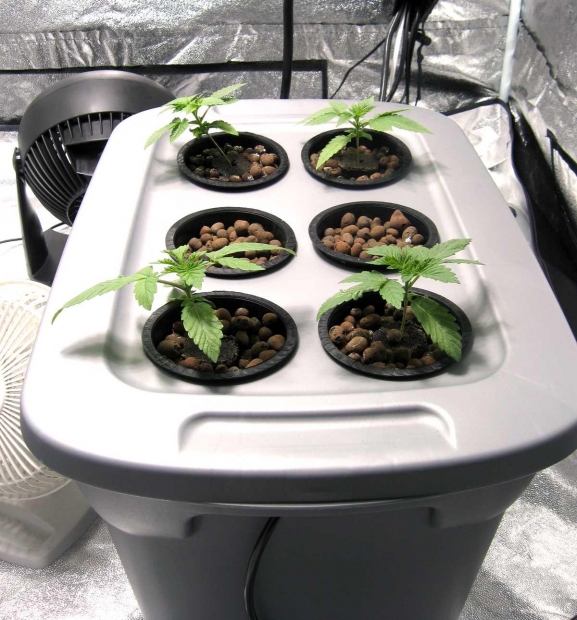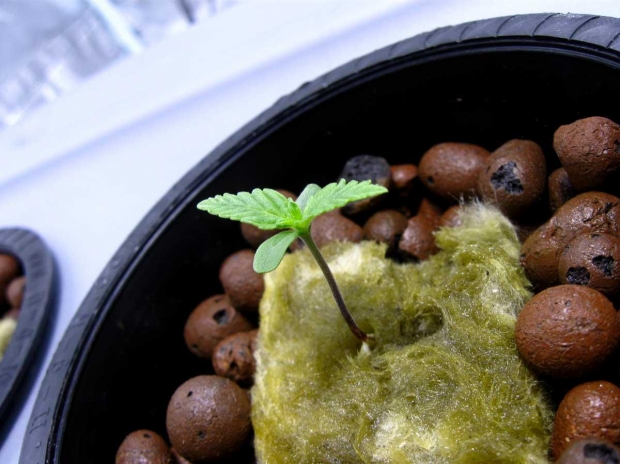 Loading... Please wait...
Loading... Please wait...Save Money. Grow Your Own!
Fast Plain Box Shipping.
We ship to the US & Canada.
Grow Your Own!
Beginner's Guide to Flood and Drain Systems
Posted on 28th Apr 2016
Why do hydroponic system seem so intimidating? Often, it's just because we don't understand some of the simple ways that these systems are set up.
Take the flood and drain system, which is also sometimes called an ebb and flow system. Both of these terms sound kind of technical and they can really intimidate people without any experience in hydroponic gardening.
You might come up with simpler names for this kind of system, but essentially, it is exactly what it sounds like. You flood the plant’s roots with water and then you drain it out. But in most cases, the hardest part of this system is getting the water to predictably flow up and into the plant root environment.

Here are some easy steps to setting up a flood and drain system that don't take a lot of engineering or structural knowledge.
Set up your tray table space
The water setup is this simple -- you have a Rubbermaid container with water on the floor, and you have a try or table directly above it.
Easy, right? But for some reason, when people are describing these systems to others who haven't used them before, the beginners get nervous. It has to be more complicated than that, right? Not really. Yes, you have to have a pump to get the water up into that tray, but in terms of setting up, there's no magic to positioning the reservoir. And you don't have to have some kind of magic box to keep the water safe. You can do it with any plastic container that doesn't leak.
Get grow media
Here's another point where beginners get nervous. What the heck is grow media, and how much does it cost? How do I make choices about grow media?
Again, this is really a lot simpler than it sounds. You simply get some of the stuff that hydroponic places sell. They sell an item called rockwool that's good for drainage. They sell clay pellets that allow a lot of air to get to plant roots, and they sell coco coir, which is coconut husk material. These and a few other types of media are all fine for plants. You want the water to be able to drain, because after it provides nutrients to roots, it's just going to drain back down into the reservoir.
Clay pellets are a popular choice for flood and drain systems. Growers might use netted pots that hold the stuff in place when the water leaves.

Set up timing intervals
This is one of the trickiest parts of the flood and drain system, but it's still not conceptually difficult. It's just tricky to set up.
You’ll either be watering the plants manually or automatically. If you want to do it automatically, you need some kind of timer attached to the pump to get the water up into the tray two or three times a day. The simpler way to do it is to do the whole thing manually. In other words, you come in at, say, 10 AM, 3 PM and 7 PM and you hit the button and pump the water up and then let it out. It's that simple.
If all of this sounds too good to be true, think about it -- what do plants need to grow? They need light, they need air, and they need water. And they need nutrients. As long as you have a good source of light, and you set up these kinds of systems as described above, you have a good chance of cultivating a nice harvest. Sure, there are some pitfalls to look out for, like bacterial invasions and pest control, but in terms of the actual build of your flood and drain system, this is pretty much going to do it. When you need sophisticated gear and equipment that are complex, like a well rated pump, clean grow media or anything else, just ask your retailer what's available to be shipped to your garden space. And you're ready to get started and become an expert hydroponic grower without spending years learning about how to set up the system.
